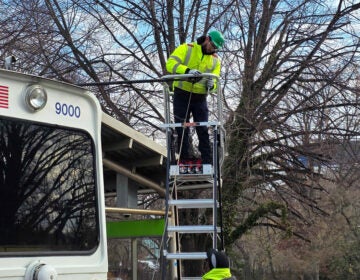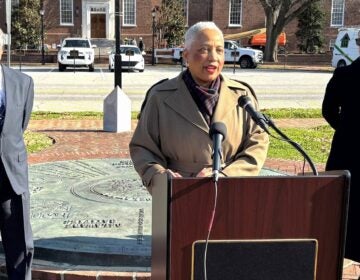List of proven goals when planning waterfront
Seven miles is a considerable distance. Along such length of urban riverfront many things can be accommodated, even more than once. Consider, for example, the array of uses and places along Market Street as it stretches from the Delaware to the Schuylkill. Now add two more Market Streets end to end, plus another half. For a seven-mile long plan it seems less important at this stage to argue exhaustively about the specific things that should or shouldn’t be located there. Most uses can be, and over the city and river’s history most things probably have been located at or near the river. It is far more important to first establish and work towards overarching goals. Goals that will hasten the transformation of the river environments from their largely utilitarian past towards a more urbane, varied of use, ecologically mindful, post-machine age future.
Seven such goals tend to reoccur as one examines successful efforts of other prominent cities as they set out to transform their relationship to their great rivers.
Almost always, the first goal is a continuous publicly accessible riverfront. This is almost never completely achieved, for reasons usually involving preexisting conditions. However, so long as it remains a top priority, it impacts all subsequent plans and projects, and eventually makes headway on pre-existing conditions, exposing them as not so desirable anomalies.
Related to continuous public access is the goal of enlarging, or widening, the zone of overlap between land and river. The deeper into the city fabric the presence of the river is felt the more successfully does that city leverage its water assets. The best riverfront planning thinks in terms of perpendiculars to the water, increasing the frequency of great streets, pathways, vistas and green corridors that link the city interior to the river and to removing the barriers that impede such links.
A third goal is to promote, not exclusively but quite broadly, adjacent housing of various type. A riverfront comes fully alive only when it is bordered by great neighborhoods, not just venues for tourists. Creating great places to live in the heart of Boston, San Francisco, Vancouver, or Philadelphia, need to be early priorities, not a later consequence of other actions. One can devise regulations against building massively or for only a single use. One can regulate against the casting of undo shadows and against loss of public access, but in all but the most extreme densities, having more people living near the water provides a long-term competitive advantage for a city.
To compete globally requires recasting more than narrowly preserving a city’s riverfront persona, especially since despite change a waterfront maintains for its city some inherent and unalterable stability. Boldness of vision is thus possible, and so the fourth goal is to welcome change by changing and liberalizing regulations along riverfront districts. A riverfront geography uniquely reinforced by a special pattern of urbanization that invites a variety of uses can forestall the ‘this could be anywhere’ syndrome of much current urban development. The tactics of urban planning at the waterfront should be less about conventional thinking, and more like the actions of a tide; scouring, reshaping, yet miraculously sustaining the shore.
A fifth goal is to create widely valued civic amenities, a natural expansion of the principal amenity of the water itself. It is no accident that Chicago’s newest park, Millennium Park, continues a century-long tradition of gracing its lakefront with a fabulous open space system. Nor is it an accident that Cleveland’s Rock and Roll Hall of Fame, London’s Eye, Sidney’s Opera House, Milwaukee’s new Museum of Art, or Bilbao’s Guggenheim all share waterfront settings. Great institutions belong in great settings. That is but the broadening of the first goal that seeks to expand the public realm at river’s edge.
A sixth goal is to create mechanisms that facilitate joint public / private enterprises. Private investment alone will rarely produce civic magic. Private capital is often cautious and demands public dollars to precede it. On the other hand public capital spent in the absence of willing investors nearby may also prove premature, and is hard to come by these days in any event. Identifying creative on ongoing ways of linking public investment to private or institutional capital is one of the main challenges of contemporary American urban planning, and riverfronts are no exception.
A final goal, though again more a strategy, is not to risk long-term value for short-term riches. In our haste to reinvigorate the parts of a city that have witnessed sustained disinvestment or obsolescence, officials often offer the best sites to the first project proposers. It is not automatic, however, that the earliest investors propose the best or the most sustainable ideas. Cities need not accept second-rate proposals or engineer entire redevelopment plans around specific projects in the hope of accelerating commercial real estate values. A patient view bolstered by a belief in the optimal value to be reaped from miles of urban riverfront should underscore any new round of riverfront planning.
So wise waterfront planning must unravel unnecessarily polarized visions, combining grand expectations with considerable self-reflection about the very nature of contemporary urbanism. Should planning for reuse support traditional maritime industries or promote new economies? Should cities seek new markets/status through refurbished waterfronts or maintain long-standing identities? Should public investment favor residents’ needs, attract newcomers or cater to tourists? Should commercial expansion be favored or multiple civic needs addressed, especially those which private initiative does not readily achieve? Should, for example, cities seek to profit from the scale of modern development attracted to reconnected riverfronts or restrict density while enlarging public access and recreational space? Remembering that seven miles is a lot, the best — and most enduring – riverfront plan would say ‘yes’ to much of the above.
The role of great cities is shifting from being places where you must go, for a job, to places where you wish to spend time – to partake of that Aristotelian ideal of a “good life.” As cities become more desirable places to be – along their most remarkable features such as waterfronts – and create places to interact with others; to visit and tour; to live during stages across longer lives; as they attract us for such reasons and not merely for economic opportunity, they reaffirm their fundamental humanitarian purpose.
WHYY is your source for fact-based, in-depth journalism and information. As a nonprofit organization, we rely on financial support from readers like you. Please give today.






